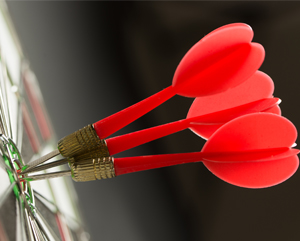Why is no one talking about marketing to men?
The merits of marketing to women are often discussed, not least in our recent blog about the #thisgirlcan campaign. But what about marketing to men? Rather less is said in industry commentary about the male demographic. Given that they represent slightly over 50% of the global population, (The World Factbook estimates that in 2016 there were 1.015 males per female), this seems rather odd. This week we’re exploring why this demographic is so little discussed. We’ll also take a look at some interesting dialogues which are taking place.
Taken for granted?
The question of why men are so rarely discussed when it comes to marketing can be traced to a number of reasons.
The first is that, as the majority demographic not only in number but also in terms of influence, social status and political power, it is generally assumed that men make up the dominant forces in society. Very few societies or cultures can be considered matriarchal – a form of social organisation in which women are the head. Patriarchal structures and modes of thinking tend to dominate. Marketers have long been employed in targeting underrepresented members of society such as women or ethnic minorities. However, less concentrated efforts have been targeted at understanding male audiences.
When efforts to understand the male demographic are made, they generally fall into two categories: the single man and the attached/family man. For the single man, stereotypes of a sport-loving, gadget-obsessed, hyper-sexualised male with a taste for “lad” culture have led the way for marketers, as can be seen in the success of the likes of Lad Bible. On the other hand, the attached/family man has all but been removed from holding any sway in purchasing power, with brands like Old Spice concluding that once in a relationship or family situation, men no longer make the key spending decisions in the household.
So much effort has been made to deconstruct and overcome gender based stereotypes in the female marketing arena. Isn’t it time marketers moved beyond such simplistic assumptions and asked ourselves, what is it that men really require from their brands? Here are two thought-provoking discussions taking place in industry right now.
Unravelling unconscious career bias
As briefly explored above, there are a vast array of assumptions that marketers, and society at large, make about men. One conventional piece of wisdom which has proven long lasting is that men are career focused, and expected to provide for themselves, partners and/or families in financial terms.
A recent article by The Drum argued that such unconscious bias which associates men with careers simultaneously presumes that ‘there isn’t, for most, a strong unconscious association between male and family.’ This can have a knock on effect in a number of arenas. It can lead men to internalise stereotypes about their own identities and suffer from increased anxiety or stress when they do not meet these expectations. They may also reluctant to put their family time before their career for risk of not being taken seriously.
One successful way marketing has begun to tackle this unconscious bias is through brands such as Fatherly. With the tagline ‘win parenting’, this self-described ‘parenting resource for men’ has quickly grown into a sleek, “grown-up” brand. They focus on providing quality content, aimed specifically at the male demographic. They offer science facts to share with your kids to the latest product reviews, hard-hitting social commentary and a ‘shop’ section featuring gift ideas. Fatherly has shown that male marketing can transcend stereotypes and carve out a sphere of its own in marketers’ minds.
Challenging unattainable body images
For years, brand giants such as Dove have been combatting the proliferation of unattainable images of female bodies. They are tackling the role this plays in teenage development and body confidence. In 2014 The Huffington Post reported that Dove’s Real Beauty Campaign was 10 years old. It is now a staggering 13 year campaign. That huge progress has been made was shown in the 2015 scandal over Protein World’s ‘Beach Body Ready’ campaign. The Advertising Standards Authority (ASA) deemed it socially irresponsible and demonstrations take place across London’s Hyde Park in response.
And yet where has this movement been when it comes to male body representation in marketing? Diet Coke’s 2013 advert saw a coke-soaked gardener remove his t-shirt to reveal washboard abs and a Baywatch-worthy tan. It did not spark a backlash over the objectification of men. Nor was the psychological effect of these unattainable images on young men discussed.
Recently brands have come to challenge this convention, for example Lynx’s ‘Find Your Magic’ campaign. Previously, Lynx has been more than willing to indulge in gender stereotypes and lad humour to promote its ‘Lynx Effect’. More recently though, a reassessment of strategy has shown that brand evolution is crucial when responding to social changes. Instead, they’re asking ‘who needs a six pack’ and featuring men of all ages, colours, sexualities and abilities. Their ‘Find Your Magic’ campaign is a far cry from Lynx’s old brand image. The ad has racked up 5 million views on YouTube and hailed as evidence that ‘the Lad is dead’ by The Guardian. The move demonstrates that headway is being made in marketing to men.
Marketing to men
Marketing to men as a demographic should be under targeted or lacking in nuance. While all stereotypes have some basis in truth, over relying on them is problematic. Marketers risk their customers being turned-off by their assumptions, but also for society at large. Marketers shoulder a large responsibility for the way in which they shape trends and thought processes. Rising to the challenge of male marketing, as we continue to represent women and minorities, is a must to navigate our changing landscape.




